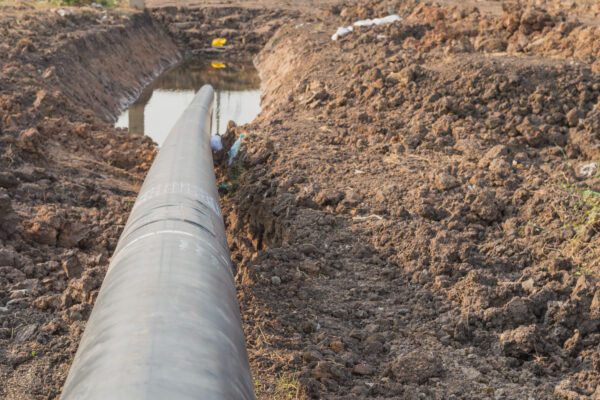Click here to learn more about our Underground Utility Risk Management Program.
Directional drilling, often known as horizontal directional drilling, is an innovative method for installing underground utilities, pipelines, and cables with minimal surface disruption. However, like any other method, it comes with its unique set of challenges that can vary with the changing seasons. As companies embark on directional drilling jobs throughout the year, understanding these seasonal risks is crucial.
Directional Drilling in the Summer
Heat and Equipment Strain: In the height of summer, the main challenge is the intense heat. The high temperatures can overheat equipment, leading to reduced efficiency and potential breakdowns. It’s not uncommon for directional drills to overheat, which may increase downtime or necessitate repairs.
Risk Management Recommendation: Do you have lease & rented equipment with extra expense coverage should you have to lease or rent a new drill?
Operator Fatigue: High temperatures can also lead to operator fatigue, dehydration, and heat-related illnesses, reducing the efficiency and safety of operations. Proper hydration, breaks, and protective clothing are essential during this season.
Risk Management Recommendation: Do you have an established relationship with an express clinic to help avoid unnecessary Worker’s Compensation claims?
Horizontal Directional Drilling in the Spring
Ground Instability: The melting of winter snow and the frequent rains can make the ground soggy and unstable. Soft soils can challenge the stability of the drill path, making it essential for directional drilling companies to assess soil conditions meticulously.
Risk Management Recommendation: Establish and adhere to strict company guidelines when drilling in soft soil conditions with maximum clearance requirements.
General Liability Claim Example:
XYZ Company was working on a project in a state with softer soils such as in the state of Florida with corral earth. XYZ conducted an initial assessment by measuring the depth of the sewer through an opened manhole. With utility lines positioned above the sewer, the decision was made to proceed with drilling beneath it, adhering to the common practice of maintaining a depth of 2 feet below the sewer.
During the drilling operation, the location of the drill head was consistently marked and monitored by a locator. Each rod used in the process was also marked at specific depth intervals. At a depth of 14.1 feet, which corresponded to 2.1 feet below the sewer’s 12-foot depth, the sewer was precisely marked.
While actively engaged in drilling, the operator of the drill detected a decline in pressure and fluid levels, prompting an immediate cessation of operations for investigation. Upon opening the manhole, it was discovered that the pressure loss was attributable to an inadvertent contact between the drill head and the sewer line. XYZ Company had diligently followed all established industry standards, but regrettably, the damage occurred. Notably, the area where the incident took place exhibited a substantial presence of corral earth, leading to the supposition that the upward force exerted by the corral underground contributed to the incident.
Total Cost of Claim: $80,000 to repair the sewer system, installation of dewatering system, and asphalt restoration. Equipment Corrosion: Increased moisture levels during spring can heighten the risk of equipment corrosion, especially if the machinery is not adequately maintained or protected.
Directional Drilling in the Winter
Frozen Ground: One of the most obvious challenges of directional drilling in winter is the frozen ground. Drilling through frozen soil requires more power and can wear out equipment faster. Moreover, it can be challenging to maintain the desired drill path when working in such conditions.
Operational Delays: Snow, blizzards, and extreme cold can cause operational delays. Machines might need more time to warm up, and there’s an increased risk of equipment malfunctions.
Worker Safety: Cold-related illnesses like frostbite or hypothermia are real concerns. Workers should be equipped with proper protective gear and have access to warm shelters.
Horizontal Directional Drilling in the Fall
Leaf and Debris Buildup: As leaves fall and vegetation dies back, there’s an increase in surface debris. This can get caught in machinery, leading to potential blockages or equipment damage.
Variable Ground Conditions: Fall can be a transitional period with a mix of wet and dry days. This can lead to unpredictable ground conditions, requiring continuous monitoring and adjustment of drilling strategies.
General Risks Across Seasons
Regardless of the season, some risks remain constant:
Striking Existing Utilities: One of the primary concerns for any directional drilling job is the potential to hit existing underground utilities. Proper surveying and marking are crucial to avoid this.
Equipment Failure: Machinery can malfunction due to a myriad of reasons, from wear and tear to manufacturing defects. Regular maintenance and checks are essential.
Operator Errors: Even the most experienced operators can make mistakes. Continuous training and adherence to safety protocols are crucial.
Conclusion
Seasonal variations bring about unique challenges to the world of directional drilling. Whether you’re a company offering directional drilling services or an individual seeking directional drilling jobs, understanding these risks helps in better preparation and implementation of safety measures. By staying informed and proactive, directional drilling companies can mitigate these challenges, ensuring successful, efficient, and safe operations throughout the year.
Material posted on this website is for informational purposes only and does not constitute a legal opinion or medical advice. Contact your legal representative or medical professional for information specific to your legal or medical needs.




